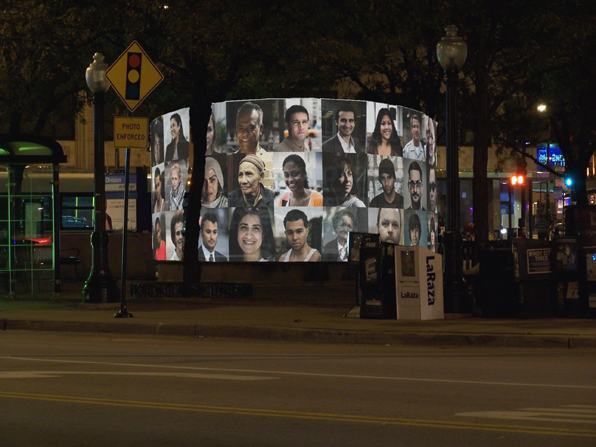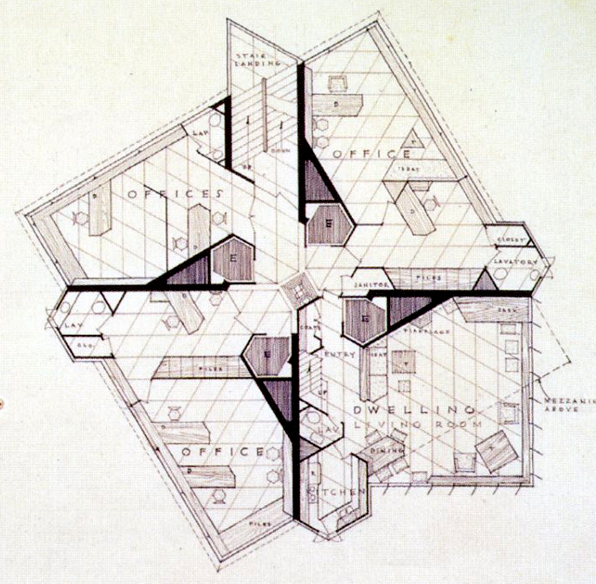In northeast Oklahoma, just west of the Osage Indian Reservation, lies Bartlesville, home of Phillips Petroleum and Frank Lloyd Wright's only completed "skyscraper" building, the Price Tower.
The history of the Price Tower is long and complex and Frank Lloyd Wright's recycling of an earlier unbuilt tower design is well documented. It is all worth reading and a little study, but it really does not prepare you for a confrontation with the building itself. And even though by today's standard the building is not so tall and the motifs a bit dated, the building itself has a magnificent sculptural presence.
Designed for multi-purpose usage, the tower houses offices and residential space on each of its central floors. From the outside of the building, the horizontal slats and fenestration define the office spaces while the vertical louvers identify the residential portions. Instead of subdividing the building vertically and stacking one use exclusively upon the other, Wright and his client choose to intermingle the two, with only the base and top-most floors housing a single function.











